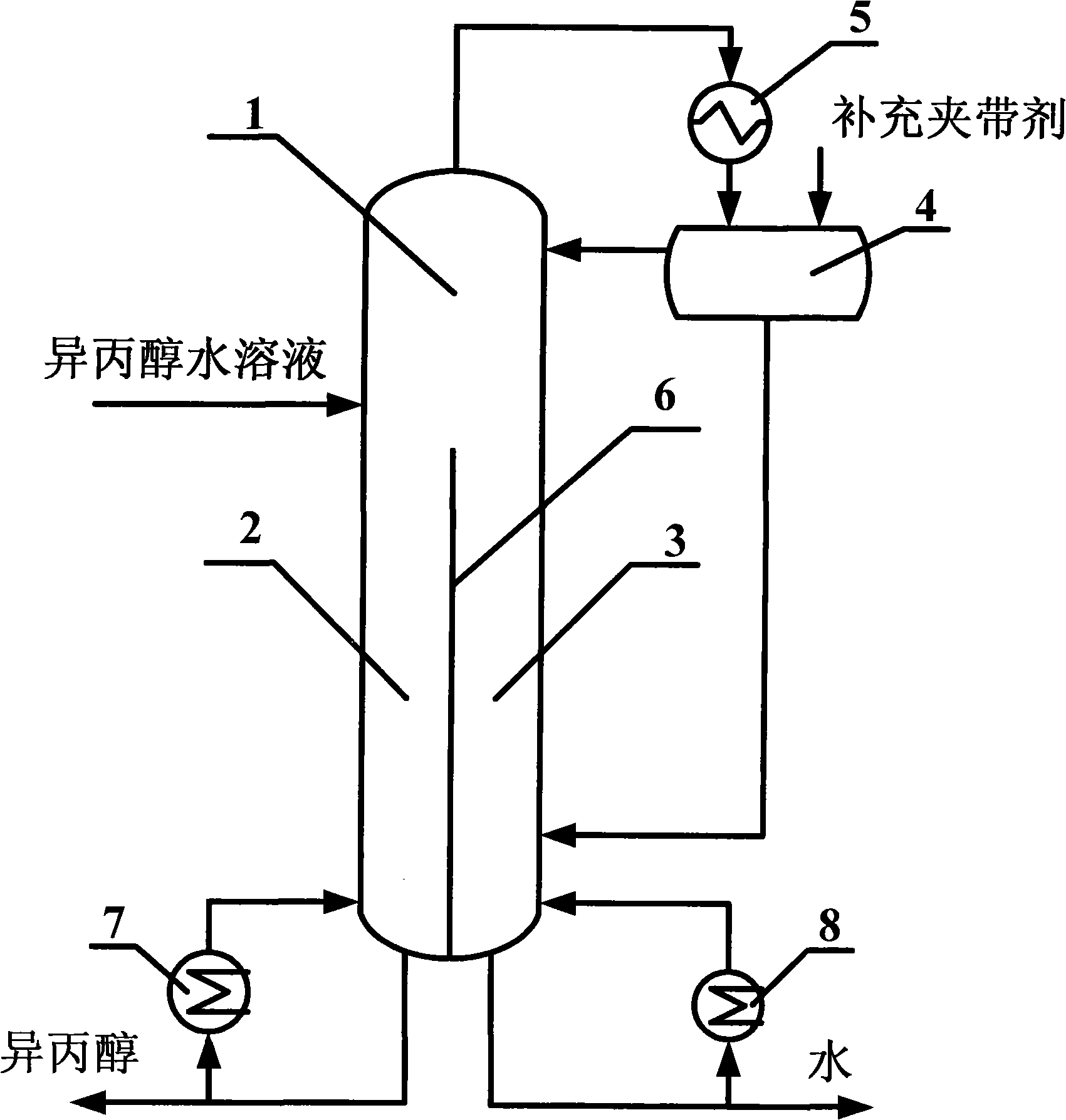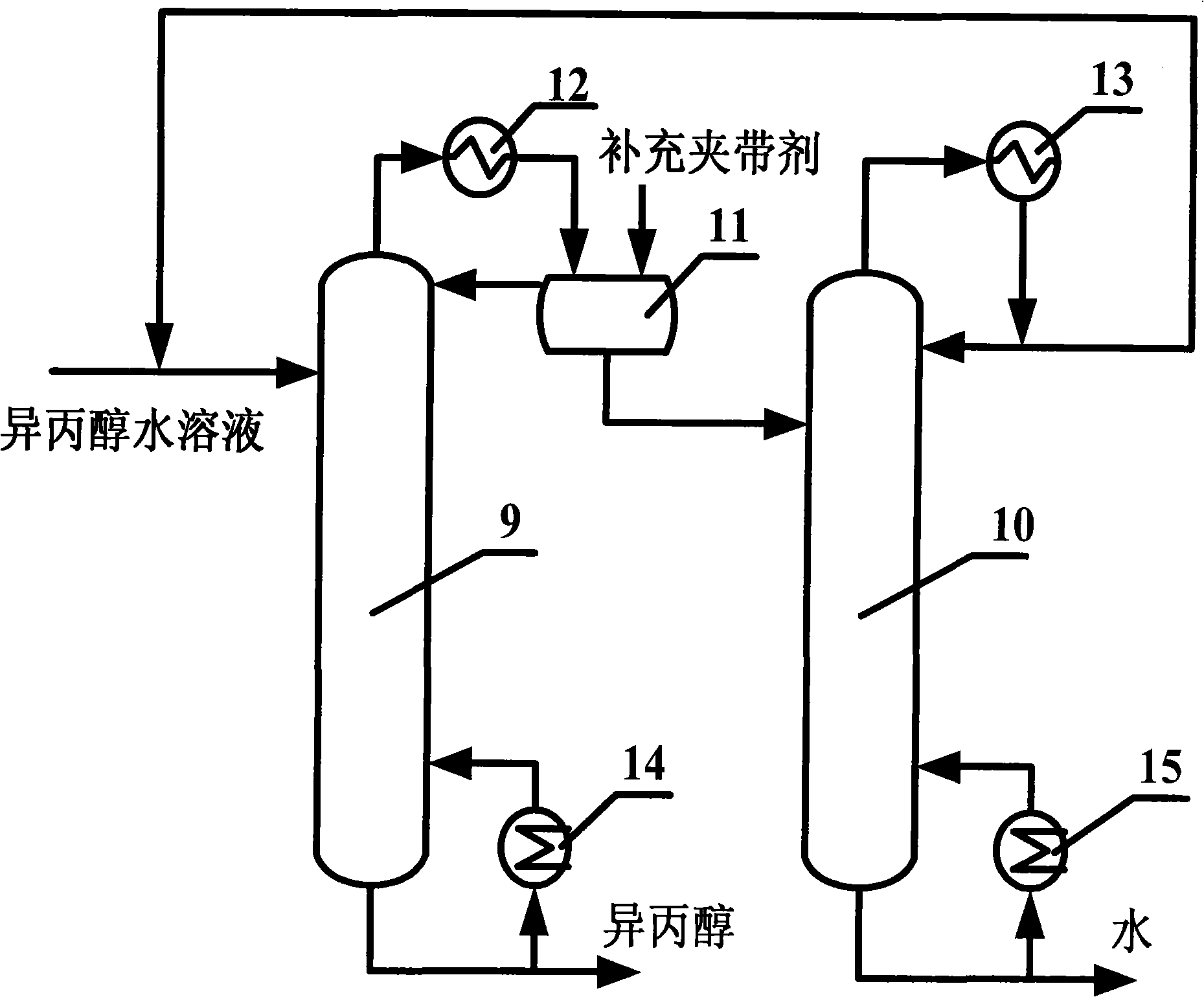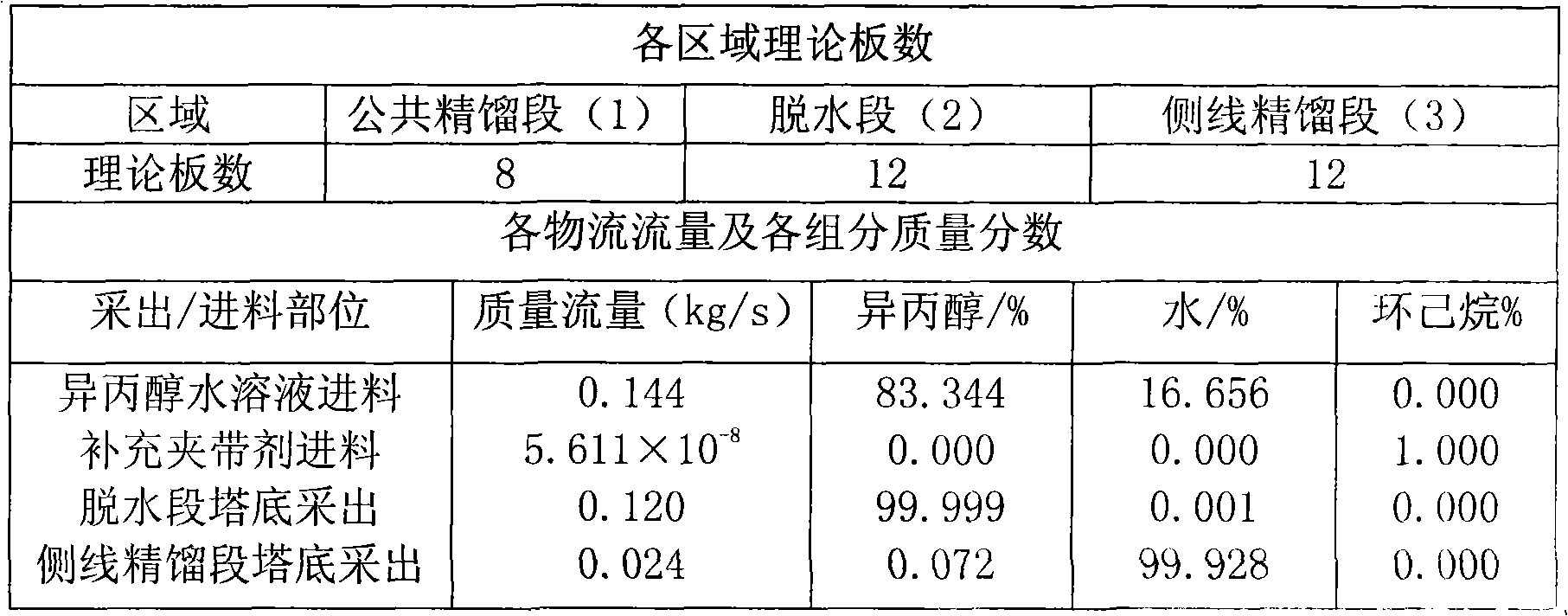Technological process and device for separating isopropanol water solution
A process method, isopropanol technology, applied in chemical instruments and methods, preparation of organic compounds, organic chemistry, etc., can solve the problems of high investment and energy consumption, complex process operation, unsatisfactory isopropanol purity, etc. The effect of equipment investment saving
- Summary
- Abstract
- Description
- Claims
- Application Information
AI Technical Summary
Problems solved by technology
Method used
Image
Examples
example 1
[0018] Example 1: if figure 1 process shown. The next-wall azeotropic distillation column adopts a tray column with a column diameter of 1600mm and a column height of 12000mm. The cross-sectional area ratio of the dehydration section (2) and the side line rectification section (3) is 0.51:1. The mass flow rate of the liquid phase flowing into the dehydration section (2) from the top of the partition wall (6) is 38.5% of the mass flow rate of the liquid phase at the top of the partition wall (6). The number of theoretical plates, feed flow rate and composition of each area are shown in Table 1. Cyclohexane is used as the entraining agent, the feeding position of the raw material isopropanol aqueous solution (counted from top to bottom, the same below) is the sixth theoretical plate of the public rectification section (1), and the heavy phase reflux position in the phase separator is the side line In the 10th theoretical plate of the rectification section (3), supplementary en...
example 2
[0021] Example 2: if figure 1 process shown. The azeotropic rectification column with the next wall adopts a tray and packing mixed tower with a diameter of 2200mm, and the height of the tower is 14000mm. The side line rectification section (1) uses trays, and the dehydration section (2) and side line rectification section (3) use packing. , the cross-sectional area ratio of the dehydration section (2) to the side rectification section (3) is 0.47:1. The mass flow rate of the liquid phase flowing into the dehydration section (2) from the top of the partition wall (6) is 43.4% of the mass flow rate of the liquid phase at the top of the partition wall (6). The feed position and the number of theoretical plates in each region are the same as in Example 1, and the entrainer is still cyclohexane, but the feed composition and flow rate are changed to some extent. The flow rate and composition of each stream are shown in Table 2. The temperature at the top of the tower is 63.8°C; ...
example 3
[0024] Example 3: if figure 1 process shown. The next-wall azeotropic distillation column adopts a tray column with a column diameter of 1600 mm and a column height of 16000 mm. The cross-sectional area ratio of the dehydration section (2) and the side line rectification section (3) is 0.51:1. The mass flow rate of the liquid phase flowing into the dehydration section (2) from the top of the partition wall (6) is 38.5% of the mass flow rate of the liquid phase at the top of the partition wall (6). Feed composition, feed flow rate and the number of theoretical plates in each area are the same as example 1, and the entrainer is still cyclohexane, but the feed position is changed, and the isopropanol aqueous solution feed position becomes the public rectification section (1) No. 3 theory boards. The temperature at the top of the tower is 61.0°C; the temperature of the bottom of the dehydration section (2) is 80°C; the temperature of the bottom of the side rectification section ...
PUM
 Login to View More
Login to View More Abstract
Description
Claims
Application Information
 Login to View More
Login to View More - R&D
- Intellectual Property
- Life Sciences
- Materials
- Tech Scout
- Unparalleled Data Quality
- Higher Quality Content
- 60% Fewer Hallucinations
Browse by: Latest US Patents, China's latest patents, Technical Efficacy Thesaurus, Application Domain, Technology Topic, Popular Technical Reports.
© 2025 PatSnap. All rights reserved.Legal|Privacy policy|Modern Slavery Act Transparency Statement|Sitemap|About US| Contact US: help@patsnap.com



